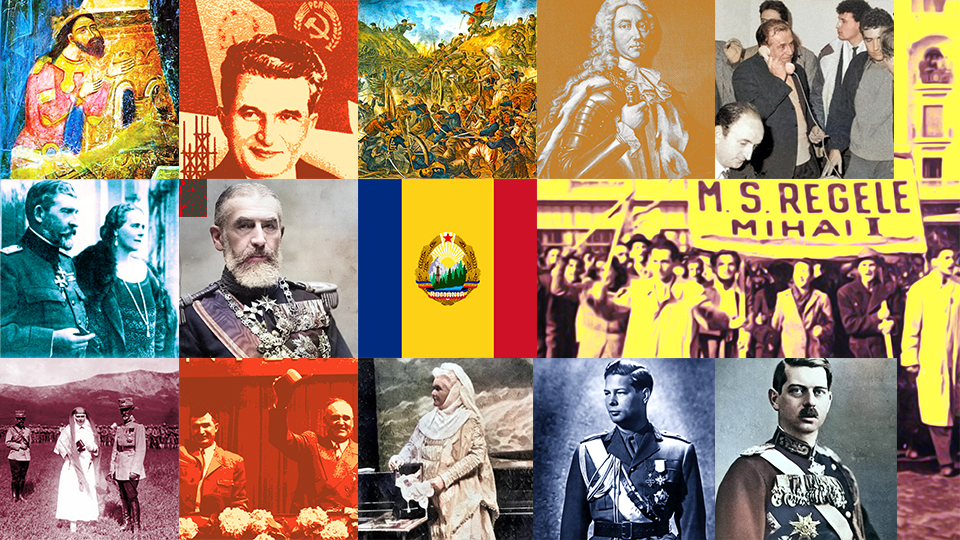The Romanian Institute of Technical Documentation
Located in downtown Bucharest, on the Victory Boulevard, the Technical Documentation Institute was the main information and documentation center for engineers.

Steliu Lambru, 06.05.2024, 14:00
Institutional history is not always as interesting as the biography of a personality, or as the story of a breakthrough that changed everything that mankind used to know. Institutions are generally perceived as cold, depersonalized spaces, where an authority imposes its order on citizens. But the history of institutions is of great importance in knowing the past, because they also involve human creativity and daily routine for the people who work there.
In Romania, after 1945, the communist regime was established, with the direct support of the Soviet occupation army. This meant the destruction of old institutions considered repressive of the working class, the distortion of others, as well as the establishment of new ones. One of the major problems faced by the communist regime in Romania was finding specialists, engineers in particular, to help restart the new centralized economy headed by the communist party. While part of Romania’s old technical elite had been thrown into prison on ideological grounds, the new elite was trying to make up for what had been lost and adapt to the new ideology. Thus, an institution that assumed the task of collecting information and drawing up syntheses related to the state of technological development was Romania’s Technical Documentation Institute, established in 1949.
Engineer Gheorghe Anghel was the general director of the institution and in 2003 he recalled, at the microphone of Radio Romania’s Oral History Center, the beginnings: “The Technical Documentation Institute of Romania became appreciated as one of the best documentation and information institutes of the socialist bloc. Specialists from many countries came to learn how the information and documentation activity was organized in Romania. Apart from the National Institute of Information and Documentation, there were a number of 24 information-documentation offices, by branch and field, which in turn were specialized in promoting technical innovations in the field they represented.”
Located in the center of Bucharest, on the Victory Boulevard, the Technical Documentation Institute was the main information and documentation entity for engineers. The institution was copied after a similar one in the Soviet Union, a huge institute, focused on this activity. The Romanian institute was equipped with an impressive technical book fund and substantial collections of specialized magazines from all technical fields. A generous reading room accommodated everyone who wanted to stay connected to the latest news in their field. The institute centralized technical knowledge, but at the level of each branch and field of activity it was also supported by information and documentation offices.
Gheorghe Anghel talked about the activity of the institute: “The activity of the Institute and the offices was very complex. It was not limited only to the reception of books and magazines, but, in particular, to the promotion of content. Within the Institute there was a whole series of departments that processed the existing information in the pages of the magazines: from simply signaling the existence of the content of the existing magazines, by photocopying their summaries and organizing them into several collections, which were distributed on a subscription basis to those interested , to the actual processing of the content of specialized articles. The respective novelties were extracted from them and they were reported to the specialists in the national economy.”
But although the institute was intended for engineers and technical documentation, the famous censorship was in place there too. Gheorghe Anghel: “We did not have the right to send all magazines to the reading hall. Some of them contained various articles that were not in tune with the party policy. So, there was a special stamp applied on the banned ones. They were registered at an office of secret documents and deposited there. The access was prohibited. I remember that there was an elaborate book in English that dealt with a certain mysterious phenomenon that had happened in the Urals. On the basis of documents published in the Soviet Union in specialized magazines, an English researcher had demonstrated that an atomic catastrophe had occurred in the Urals in which many people had perished. At that time these things were not public and were shrouded in mystery. It was not a fantasy, they were accurate documents published in the Soviet Union, in their magazines.”
The institute held symposia and conferences, and by 1974 several hundred foreign-language people were working there. However, in 1974, Elena Ceaușescu, the wife of Nicolae Ceaușescu, head of the National Council for Science and Technology, decided to streamline the activity and reduced the number of employees to 160. However, in the 1980s, the general crisis of Romanian society also hit the institute. Due to the lack of foreign currency, the purchase of magazines and books had been drastically reduced. Those seeking to document themselves, could still read publications from the Soviet Union. The crisis of the institution was the crisis of the system that ended in 1989. (EE)






























